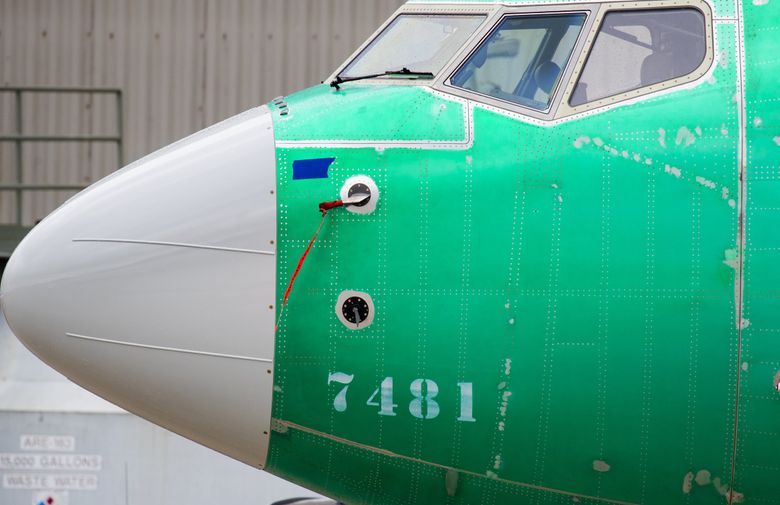
The issue of the Boeing 737 Max having only two angle of attack (AOA) sensors, instead of three, has been identified as a contributing factor in the two accidents that occurred in 2018 and 2019. The Federal Aviation Administration (FAA) and other aviation regulators have mandated that all 737 Max aircraft must have three AOA sensors installed before they can be returned to service. Boeing has also developed a software update for the 737 Max that addresses the issue of the AOA sensors. Therefore, it is recommended that the 737 Max be refitted with three AOA sensors in order to address the risk uncovered from the recent accidents.
The Boeing 737 Max is a narrow-body aircraft that experienced two major accidents in a short period of time. The Lion Air Flight 610 crash in October 2018 and the Ethiopian Airlines Flight 302 crash in March 2019 resulted in the loss of 346 lives. Investigations into these accidents revealed that a faulty angle of attack (AOA) sensor played a significant role in both cases.
The AOA sensor measures the angle between the aircraft’s wings and the oncoming air, providing critical data for the flight control system. In the case of the 737 Max, it was found that the MCAS (Maneuvering Characteristics Augmentation System), a flight control feature designed to enhance stability, relied on data from a single AOA sensor. If the sensor provided erroneous data, it could trigger an automatic nose-down movement of the aircraft, potentially leading to a loss of control.
To address this safety concern, regulatory authorities, including the FAA, mandated that all 737 Max aircraft must have three AOA sensors installed before they can be cleared to fly again. The additional sensor provides redundancy and enhances the reliability of the system. In the event that one sensor fails or provides incorrect data, the other two sensors can cross-check and help prevent erroneous flight control inputs.
In addition to the requirement for three AOA sensors, Boeing developed a software update for the MCAS system. The update includes improved safeguards, such as limiting the system’s activation and providing clearer indications to pilots. The purpose of these measures is to ensure that erroneous data from a single sensor does not result in uncommanded and potentially dangerous aircraft movements.
By implementing these changes, it is believed that the risks associated with the AOA sensor issue have been effectively addressed. The goal is to enhance the safety and reliability of the Boeing 737 Max and restore confidence in its operation.

What is wrong with the Boeing 737 MAX aircraft?
By – Hugorubwoj
2010: Airbus announced that they will upgrade their best selling jet: the a320, they’ll put a bigger and more fuel efficient engine. Pilots didn’t have any additional training (or almost any) to switch from the a320 to the a320neo (new plane).
2011: Boeing obvious move was to put a more fuel efficient engine under the a320 competitor, the B737 NG. They called the model the 737 MAX.
Design process of the 737 MAX: Boeing noticed that a more efficient engine (bigger) wouldn’t fit under the wing, so Boeing decided to move the engines a bit forward and higher, but on testing they discovered that that move and the bigger engine had a side effect: when on full power or takeoff power, the plane tented to pitch to a high angle of attack, which would cause a stall, but the plane was expected to behave exactly as the old one.
Things get interesting: Boeing used an already existing system called MCAS. MCAS was a system that automaticly trimmed the aircraft down when the angle of attack was to high. However, this wasn’t shown to almost anyone because it had to be EXACTLY as the old aircraft.
29th of October, 2018: Lion Air 610 took off from Jakarta, immediately after rotation, the stick shaker (a device which rapidly and noisly vibrated the yoke if a stall was detected) activated, then the TOWS warning sounded, then the First Officer called out: “indicated airspeed disagree”, which meant that the instruments showed conflicting airspeed readings, then positive rate, an indication that the plane was indeed climbing and was not stalling. Then “Altitude disagree” was indicated on the PFD (Primary Flight Display). This was all because the AOA (Angle of Attack) sensor failed. When the crew retracted the flaps, MCAS erroneusly activated, 24 times in 12 minutes of flight, the 24th one, the pilots run out of energy and the plane plummented into the Java sea.
10th of March, 2019: An Ethiopian Airlines 737 MAX crashed into a field outside of Addis Abeba, 6 minutes after takeoff. The Flight Data Recorder was examined as well as the Cockpit Voice Recorder. It all looked very similar to Flight 610. The MCAS activated 4 times, the pilots reported flight control problems to ATC and then everything was over. However, the pilots realized that MCAS had kicked in and then followed Boeing intructions: follow the Trim Runaway memory items: A/P off (already off), A/T off (already off), then Stab Trim Cut-Out switches. They turned off MCAS, but the plane was already very fast and was becoming more irresponsive to inputs, so they re-engaged the Stab Trim and the MCAS, but this did worse.
Conclusion: Boeing rushed the plane into service, so MCAS worked only with 1 AOA sensor, instead of 2.
Fixes: Now all 737 MAX pilots are trained to deal with the MCAS, MCAS works with 2 AOA sensors now, and now: pilots have priority over the MCAS.


